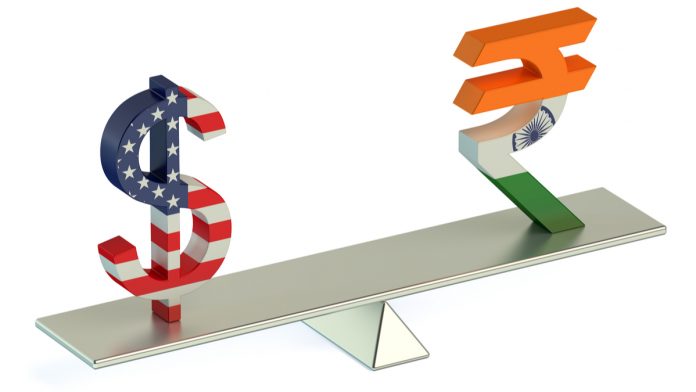Indian Rupee erased most of the early losses experienced since the beginning of the week. However, there in key reasons behind the recent Rupee strength other than the natural ebb and flow of the currency exchange rate. The broad-based dollar weakness has favored the Indian Rupee which didn’t lose time to take advantage of it.
The only notable macro risk events that have the potential to drive the USD/INR exchange rate is the recent news coming out from the IMF’s World Economic Outlook. The International Monetary Fund IMF slashes India’s economic growth forecast for 2019 by 0.9%. In the most recent World Economic Outlook report, the growth forecast was downgraded to 6.1% versus 7.0% previous forecast.
Additionally, the estimated growth forecast for 2020 was trimmed down to 7.0% versus 7.2% previous estimation. Despite the negative growth prospects, the India economy is still one of the fastest-growing emerging economies.
There are no big risk events scheduled in the US and Indian economic calendar on Friday. The lack of risk events means that the USD/INR will be more technical driven during today’s trading session. Since this is also the last trading day of the week we can also expect to see the natural liquidation ahead of the weekend.
USD/INR Technical Pattern
The Indian Rupee closed down at the end of Thursday trading session at 70.987 against the US dollar. But, the Indian Rupee still looks vulnerable as long as the USD/INR exchange rate stays above the key 200-day moving average. The big psychological number 70.000 also aligns perfectly with the 200-day moving average adding more confluence and technical relevance to this zone.
This consolidation above the 200-day moving average can fuel the next big trend. But, in order to gauge the direction of the trend we need to wait for a clear breakout or to look for signs elsewhere. The NIFTY 50 Index recent strength can give some clues. The NIFTY 50 has remained positive for six consecutive days and it is close to breaking into a new 3-month high, which can increase the demand for the Indian Rupee.
“You certainly can paint scenarios, globally and then in the UK, where that may not be enough. And certainly you can paint scenarios where you want to do some of that, but you absolutely want to complement it by fiscal policy.”





